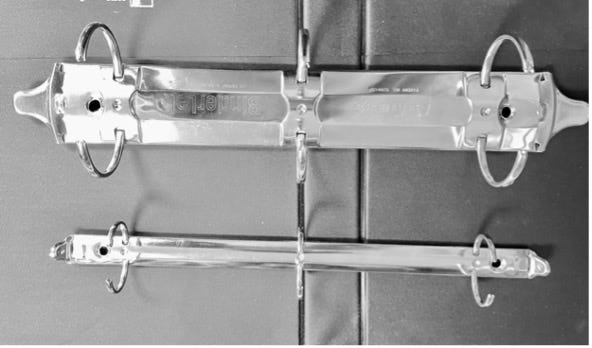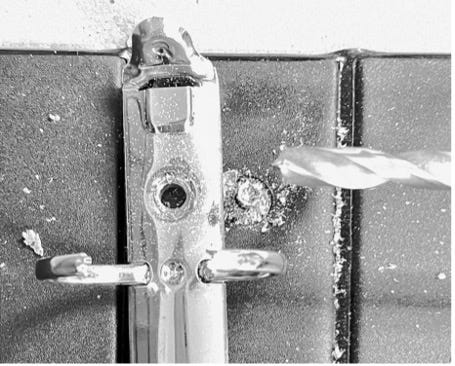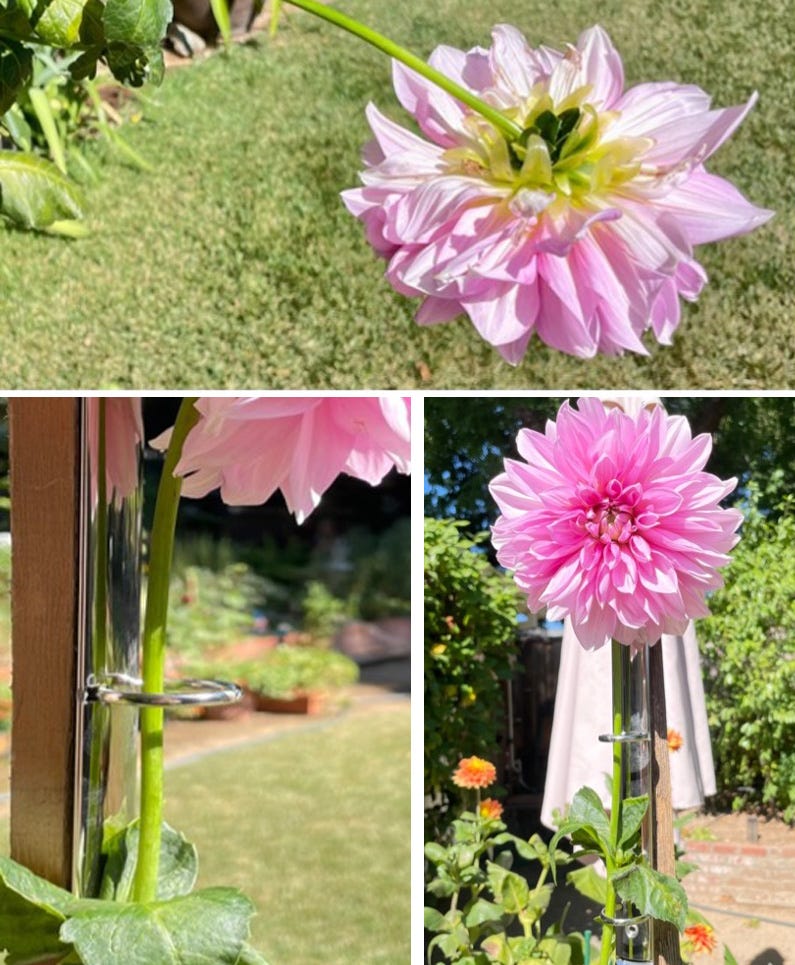Green Wednesday: Resourceful Gardening Hacks and Napa’s Climate Action Initiatives
By Bob Niklewicz, UC Master Gardeners of Napa County / By Monique Byro, Environmental Contributor
Every Wednesday, Napa Valley Features includes posts from environmental voices and the UC Master Gardeners of Napa County, who share research-based horticultural advice. Together, these contributors provide valuable insights into sustainable gardening practices and climate-related topics relevant to our region.
"I’m Not Cheap, I’m Frugal" by Bob Niklewicz, UC Master Gardeners of Napa County: A personal story of repurposing old binders to support garden plants while embracing frugality and sustainability.
"Napa’s Climate Action Plans Highlight Wildfire Resilience and Community Involvement" by Monique Byro, Environmental Contributor: A detailed overview of Napa’s climate initiatives, including wildfire protection, urban forestry and community engagement in climate action.
I’m Not Cheap, I’m Frugal
By Bob Niklewicz
NAPA VALLEY, Calif. — OK, maybe I am cheap, but I hate to waste stuff. Even when I can buy something for a specific purpose, I try to make it first, just to see if it works — sort of like a Rube Goldberg machine.
I come from a family of immigrants, which is true of almost everyone in the U.S. Many of our ancestors came with little wealth but knew how to make do with what they had or how to repurpose things for their needs.
I still harbor some of those ancestral traits. Case in point: Since childhood I have stored all my paperwork in binders, whether for school or for work. Mom bought them for me initially, but later I had to work to get them.
I had dozens, if not hundreds of binders. They adorned bookcases and file cabinets and filled closets at work and at home. They held documents I may never have touched, but you never knew when you might need them. The yellowing paper was a clue to their age. A couple more years on the shelves and they might have qualified as “family heirlooms” at an estate sale. They were good binders packed with old information.
As a retiree, I needed space for my new stuff. The binders had to go. So, with conviction, I emptied several dozen binders and filled my recycling and composting bins. Out went years of knowledge printed on paper from repurposed trees. At least I get some points for recycling.
But I still have the binders, and I just can’t bring myself to toss them out. (Maybe I am cheap.) Vinyl-covered binders with metal rings of different sizes attached to the cardboard. Should I separate them? Yes. So, I drilled out the rivets, which was easier than trying to pull the things apart by hand. That also provided me with a hole to put a screw or a nail through when mounting the metal rings.


Now I have parts of binders all over the place. Which municipal collection bin to use? Idea: I will look at the tops of the cans to find the instructions. Vinyl covers: black bin. Cardboard innards: brown or blue bin. Metal rings: blue bin. But gee whiz, those metal rings are in good shape, and they come in different sizes.
The binder deconstruction took time and energy. I’m not cheap so I must be frugal. Therefore, what kind of “garden hack” can I come up with to use those rings? Heading out to the yard, I cruised around for options. And look what I found:
My dahlia! The giant blossom overwhelmed the stem. If I do nothing, it will die with its head down. I grew it from a tuber. I was there when it started to bloom and the butterflies and bees started to hang around. This will not do. I gotta do something!
Should I use plastic ties, plastic clips, string? Those are too easy; anyone would do that. Hey, I have binder rings! All I needed was a 4-foot stake to mount the rings. In my yard, that was not a problem. I placed the stake firmly into the soil and mounted the rings with a recycled screw.
In no time, the rings were mounted on the stake and the fabulous dahlia had a new lease on life, head held high and basking in the sun.
Could I have solved the problem faster and easier using plastic clips, tape or string? Sure, but instead I spent a couple of hours saving a plant that I loved while problem-solving in the great tradition of Rube Goldberg.
So, am I cheap or frugal? Or just a retired old guy? Your call. I really did not think about it. I got the job done and felt good about it. And if you’re young enough not to know who Rube Goldberg is, look him up, rookie.
Workshop: Join UC Master Gardeners of Napa County for a workshop on “Fall Garden Clean-up” on Saturday, Oct. 26, at Las Flores Learning Garden, 4300 Linda Vista Avenue, Napa. Learn how we put the various garden plots to bed for the winter. There will be hands-on activities so you can learn how to implement these techniques in your own garden. Register here.
Library Talk: Join UC Master Gardeners of Napa County for a talk on “How to Improve Water Retention in our Landscapes,” on Thursday, Nov. 7, at 7 p.m. via Zoom. Learn some water catchment/retention approaches that you can use in your own yard to “Slow It, Spread It and Sink It.” Register to receive the Zoom link.
Help Desk: The Master Gardener Help Desk is available to answer your garden questions on Mondays and Fridays from 10 a.m. until 1 p.m. at the University of California Cooperative Extension Office, 1710 Soscol Avenue, Suite 4, Napa. Or send your questions to mastergardeners@countyofnapa.org. Include your name, address, phone number and a brief description.
If today's story captured your interest, explore these related articles:
Transform Your Garden — Embrace Low-Maintenance Native Plants
Weekender Encore: Nature’s Sweet Treasure — The Blackberries of Napa Valley
Bob Niklewicz, PT, DHSc, is a UC Master Gardener.
Napa's Path to Sustainability: Weaving Local Plans Into One Resilient Future
By Monique Byro
NAPA VALLEY, Calif. —With issues ranging from climate action to wildfire resilience and forest health, Napa is undertaking a series of interconnected initiatives to address important community and environmental challenges. Collectively, these plans seek to enhance community resilience and sustainability.
At the heart of the Napa region’s climate action is the Regional Climate Action and Adaptation Plan. This plan provides a foundation for the region’s climate strategy by focusing on how local governments can take action to reduce greenhouse gas and other climate emissions and prepare the community for climate-change impacts, including rising temperatures; increased storm, drought and wildfire frequency; sea-level rise; and increased demand on our grid. A key aspect of the RCAAP is its emphasis on community engagement and resilience, highlighting the importance of involving locals in climate action efforts.
Complementing the RCAAP is the City of Napa’s Community Wildfire Protection Plan, which addresses wildfire risk and resilience. The CWPP focuses on protecting communities by identifying high-risk areas and developing strategies to enhance wildfire resilience, such as creating defensible spaces, improving emergency response systems and supporting community education. These measures are crucial for Napa, where wildfires pose a significant and growing threat.
The City of Napa’s Urban Forestry Management Plan supports these efforts by focusing on urban forests. The UFMP aims to create a long-term vision for maintaining a healthy urban tree canopy, which provides cooling effects, improves air quality, offers wildlife habitat and enhances community well-being.
In addition, the Napa Resource Conservation District manages numerous programs aimed at empowering the community to voluntarily conserve, protect and restore natural resources in agricultural landscapes, urban areas and wild lands. This includes several programs that increase climate resilience and carbon sequestration.
Community engagement is a critical element shared by these plans. Each initiative recognizes that local involvement is essential for the success of climate strategies. Whether through active participation in stewardship and climate action or understanding the benefits of urban trees, community involvement helps make these plans more effective and ensures broader support.
The success of Napa’s climate and environmental plans hinges on the incredible teamwork behind them. Each initiative benefits from a diverse mix of partners — local governments, community groups, fire agencies and experts — coming together with their unique skills. For instance, the RCAAP unites various stakeholders to address climate challenges, while the CWPP and UFMP draw on the expertise of fire agencies, conservationists and city planners. This collaborative approach ensures comprehensive and effective solutions. Want to learn more about the people making these plans possible? Explore each plan to see how these vital partnerships are shaping a resilient Napa.
Napa’s interconnected plans reflect a commitment to a sustainable and resilient future, driven by a community that works together to address our most pressing environmental challenges. By staying engaged and informed, we can all play a part in shaping a thriving Napa for generations to come.
Take Action:
Community Wildfire Protection Plan: Participate in the CWPP survey to share wildfire concerns, review hazard assessments and suggest project ideas. Learn more at https://cityofnapa.org/CWPP.
Regional Climate Action and Adaptation Plan: Attend a Climate Action Committee meeting to engage in discussions about the RCAAP. For more information, visit the website, https://climateactionnapa.konveio.org.
Urban Forestry Management Plan: Learn about the UFMP and opportunities to help maintain or expand the city’s tree canopy. Check out the Urban Forestry Management Plan to see what
’has been developed so far at https://www.cityofnapa.org/UFMP.Volunteer Opportunities with Napa RCD: Look for tree
If today's story captured your interest, explore these related articles:
Green Wednesday: Fall Gardening Fun and Youth Climate Advocacy
Under the Hood: Climate Change's Growing Impact on Napa Valley
Pruning and Climate Adaptation Tips for Home Vineyards in Napa Valley
Dan Berger's Wine Chronicles: The Evolution of Wine in a Warming World
Black Sears Family Donates Land to Help Create Wildlife Corridor
Monique Byro is a Community Engagement Project Manager at Napa RCD dedicated to coordinating community-focused initiatives, communications and events to foster collaboration, learning and active participation in environmental stewardship.










I am looking at the plant supports I bought half price a year ago, still in their box. It’s not a good deal if you don’t use them.
good article Bob.